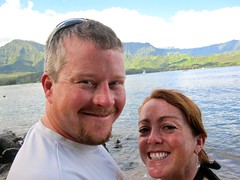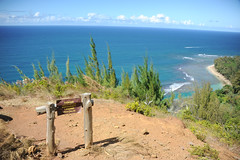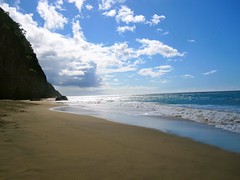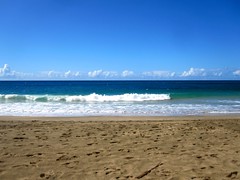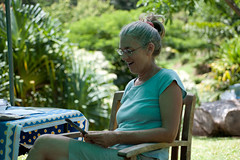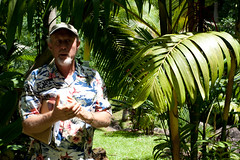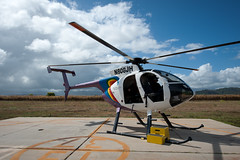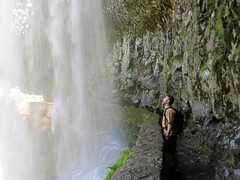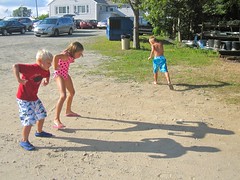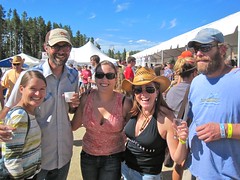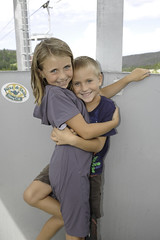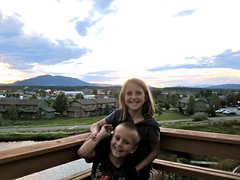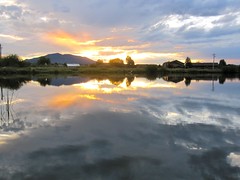PhoneGap for Hybrid App Development
This afternoon, I attended Brian LeRoux's talk on PhoneGap for Hybrid App Development at Devoxx. You might remember that I tried PhoneGap last week and really enjoyed my experience. Below are my notes from Brian's talk.
PhoneGap is a project for creating native applications using HTML, CSS and JavaScript. PhoneGap started out as a hack. In 2007, Apple shipped the iPhone and Steve Jobs told everyone they should develop webapps. PhoneGap started in 2008 as a lofty summertime hack and gained traction as a concept at Nitobi with Android and Blackberry implementations in the fall. In 2009, people started to pay attention when PhoneGap got rejected by Apple. They added Symbian and webOS support and Sony Ericsson started contributing to the project. They got rejected because all PhoneGap-developed apps were named "PhoneGap". This turned out to be good press for the project and Apple let them in shortly after.
In 2010, IBM began tag-teaming with Nitobi and added 5 developers to the project after meeting them at OSCON. In 2011, RIM started contributing as well as Microsoft. Then Adobe bought the company, so they're obviously contributing.
PhoneGaps Goals: the web is a first class platform, so let people create installable web apps. Their second goal is to cease to exist and get browsers to adopt their model.
PhoneGap is NOT a runtime or a compiler/transpiler. It's not an IDE or predefined framework or proprietary lockin. It's Apache, MIT and BSD licensed to guarantee it's as free as free software gets. You can do whatever you want to do with it. PhoneGap has recently been contributed to the Apache Software Foundation.
As far as Adobe vs. PhoneGap is concerned, the Nitobi team remains contributors to PhoneGap. Adobe is a software tools company and has Apache and WebKit contributors. PhoneGap/Build integration will be added to Creative Cloud.The biggest issues with contributing PhoneGap to Apache is renaming the project and source control. I'm not sure why it needs to be renamed, but it's likely that Apache Callback is out. There seems to be some consensus on Apache Cordova. Apache likes SVN and the PhoneGap community currently uses Git. They're trying to find a medium road there, but would prefer to stay on Git.
The PhoneGap technique is colloquially called "the bridge". It's a 3 step process: they instantiate a WebView, then they call JavaScript from native code, then they call native code from JavaScript. Apparently, all device APIs are available via JavaScript in a WebView.
The primary platforms supported are iOS >= 3, Android >= 1.5 and BlackBerry >= 5.x. They also support webOS, Symbian, Samsung Bada and Windows Phone. No mobile dev platform supports as many deploy targets as PhoneGap. Primary contributors are Adobe, IBM, RIM and Microsoft.
Documentation for PhoneGap is available at http://docs.phonegap.com. Device APIs for PhoneGap 1.0 included sensors, data and outputs, which all devices have. Examples of sensors are geolocation and camera. Data examples are the filesystem, contacts and media. Outputs are screens, speakers and the speaker jack. All PhoneGap APIs are plugins, but any native API is permitted.
What about security? Brian recommends looking at the HTML5 Security Cheatsheet. PhoneGap has added a lot of security measures since they've found the native API pretty much opens up everything.
PhoneGap doesn't bundle a UI framework, but they support any JavaScript framework that works in the browser. PhoneGap is just a fancy browser, so your code run in less fancy web browsers too. This means you can develop and test your app in your desktop browser and only use PhoneGap to package and distribute your app.
Competition? PhoneGap has no competition.
PhoneGap/Build is for compiling your apps in the cloud and free for open source projects. The biggest reason they did this is because they couldn't redistribute all the SDKs and it was a pain for developers to download and install SDKs in training classes.
For mobile app development, you should have a singular goal. Do one thing really well if you want to be successful. Great UX happens iteratively. You know that the web works and has been widely successfully cross-platform. It's likely you've already invested in the web. Start by building a mobile web client and use PhoneGap as a progressive enhancement technique.
Shipping and unit testing should be a daily activity. Automate everything so you can have one-click builds (test/dev/release). For web client design, constraints are your ally in the battle against complexity and "clients who are not chill". Phones suck and consume a lot: cpu, ram, bandwidth, battery, network... everything! Start with a benchmark of app performance and monitor that benchmark. If you have tons and tons of features, consider splitting into multiple apps.
The mobile web is not WebKit! Opera is huge, Firefox is making strides and IE still happens. For layouts: use flex-box rules (anyone got a link to these?), css media queries and meta tags for viewport. You should try to develop your app without frameworks because they come with a ton of code and can effect the size of your app.Looks can kill: aesthetics that can hurt performance: border-radius, box-shadow and gradients can slow down your apps. Chances are, you really don't need these features. Design your app for your brand, not for the device manufacturer. An app that looks like an iPhone app on Android doesn't give a positive impression.
For JavaScript libraries, start with your problem, not a generic solution like Sencha or jQuery Mobile. Zepto and its older brother XUI are all you need to start. Jo is a fantastic option. Backbone and Spine are worth watching.
For testing, QUnit and Jasmine are pretty popular. For deployment, concat, minify and obfuscate your JavaScript and CSS. Or you can inline everything into the markup to minimize HTTP chatter. Gmail inlines and comments all their JavaScript and then evals it.
From there, Brian recommended leveraging HTML5's AppCache and and using RESTful JSON endpoints for legacy systems. Next, he tried to show us a demo of a photo sharing application. Unfortunately, the Demo Gods were grumpy and Brian couldn't get his computer to recognize his Android phone. He did show us the client code and it's pretty impressive you can use 1 line of code to take a picture on a phone.
The last thing we looked at was debug.phonegap.com. This is an app that's powered by weinre. It lets you enter a line of JavaScript in your client and then remotely debug it in a tool that looks like Chrome's Web Inspector. Very cool stuff if you ask me.
Summary
I really enjoyed learning more about PhoneGap, particularly because Brain emphasized all my web development skills can be used. I don't have to learn Objective-C or Android to develop native apps and I don't even have to install an SDK if I use PhoneGap/Build. Of course, my mobile developer friends might disagree with this approach. In the meantime, I look forward to using PhoneGap to turn my mobile web clients into native apps and finding out if it's really as good as they say it is.










